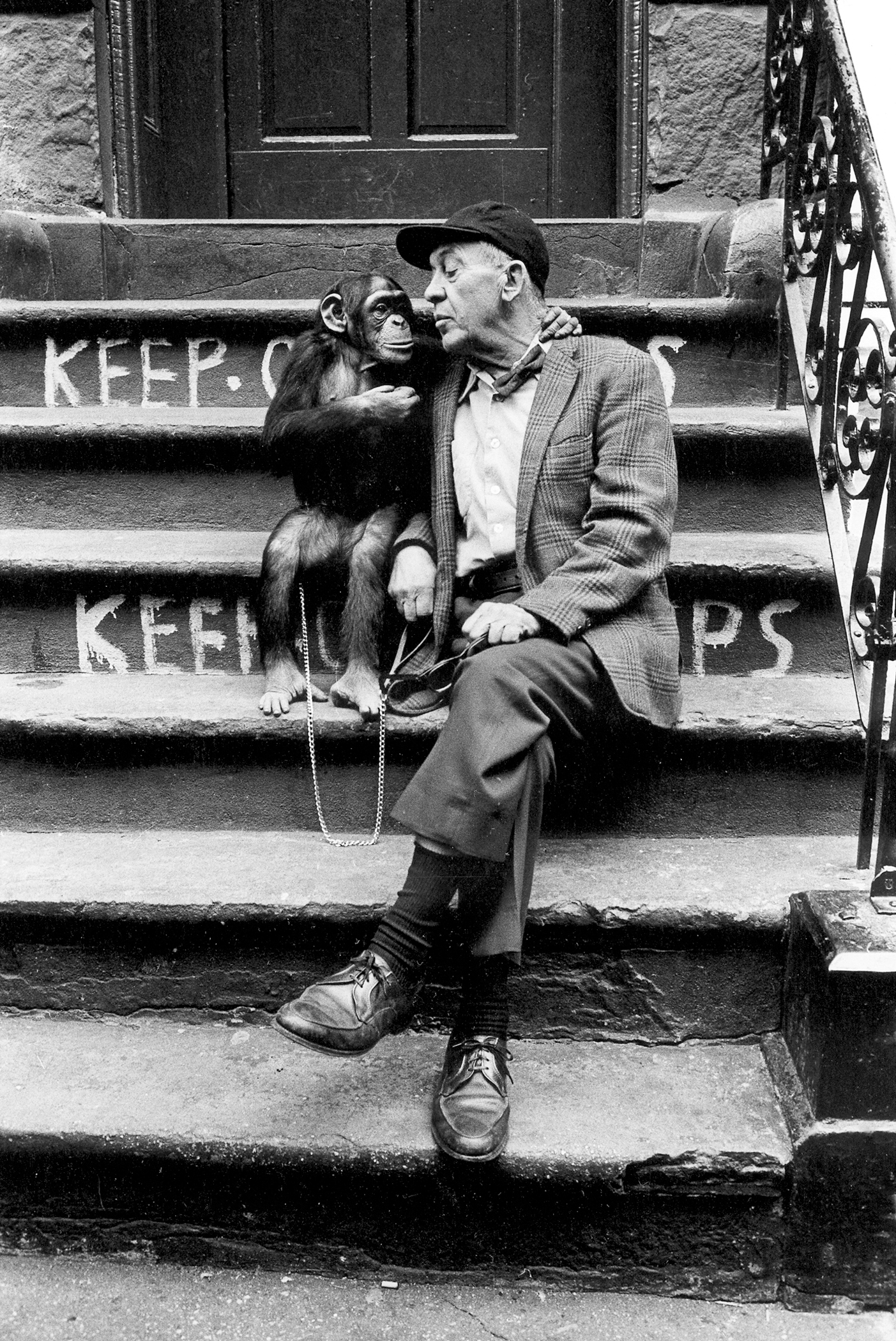Over time and across projects, a certain subject has continually come into frame for Jill Freedman: the interactions between people and other animals. In her photos, some of which are presented in this Freedman File, she depicts both how we can show love and how we can imprison while asking us to remember that we’re animals, too. Humans don’t always follow the old adage “treat others as you want to be treated” when it comes to other species, and she feels we often cover up this fact. Freedman wonders, ultimately, how we can show such affection for our pets yet treat other animals so carelessly without thinking twice—how, say, we can see a dear friend in one we know but accept the consumption of another, with little knowledge of how it was killed.
Reflecting on why she always returns to these relationships, Freedman writes:
Videos by VICE
I love animals. When I was a child, I wanted a dog more than anything in the world, but my mother was “allergic.” A girl and her dog—I still feel cheated. But I had dog friends, read thousands of animal books—Black Beauty and Call of the Wild my favorites—and took people-and-animal pictures right off the bat.
Animals delight me. They’re beautiful. They are cute and soft, furry and funny, have great dignity and do silly things. They teach us so much. They teach us kindness and compassion. They are loyal. Most have better manners than we do. They are good for our health, giving sick and lonely people something to care for, to live for. And we are all animals, and therefore all related.
They are something we can take care of and be nice to. They accept us, no matter how mean or ugly we are. All they ask is to be loved. They see things we can’t see. They inspire our sense of wonder.
We say we love our pets, and yet we don’t spay and neuter them, so millions of dogs and cats are born just to die. The ASPCA states that approximately 1.5 million shelter animals are euthanized in the United States each year. Then when it comes to our consumption of animals, the numbers killed are much greater. I often read publications from PETA, and in 2012, the organization noted that 108 billion animals are killed annually for food in the US. Hunting comes along in addition to that. PETA says almost 40 percent of hunters in the US slaughter and maim millions of animals on public land every year, and meanwhile PETA mentions yearly estimates of illegal animal killing by poachers also gauged in the millions.
Yet the pet market is a booming industry. Last year, the American Pet Products Association announced that Americans spent more than $60 billion on on their pets in 2015. Pets wear clothes, go to beauty parlors, have beauty contests and lots of toys. We buy them Valentine’s gifts. Pets are an economic force in our consumer society.
This sentimental view of animals is as much a part of American folklore as happy endings, powder rooms, and real men who never cry. Sentimentality allows us to ignore our realities. We are against cruelty to animals, but we tolerate factory farms, horse races, dog tracks, bull fights, fox hunts, dog fights, bear baiting, fur.
I love making pictures of people with other animals, showing the different relationships. I’ve taken these pictures for years without even realizing it. I even had enough for a separate book about dogs, Jill’s Dogs, my sixth book.
Why do we love and admire other animals so much? Is it because they bring out the best in us? Is it because we can literally act more human? Is that why we get along better with other species than we do with our own?
At 77, Freedman posts regularly to her Instagram account, and taking cues from Daniel Arnold and Cheryl Dunn, she now holds an annual April Fools’ Day online print sale. Her works are included in the permanent collections of the Museum of Modern Art, the International Center of Photography, and George Eastman House, among others. Freedman is represented by Steven Kasher Gallery in New York, where she continues to live and photograph. Working within her archive, she intends to publish more photo books to augment the seven released to date, including Firehouse and Street Cops, which were featured in Dunn’s 2013 documentary on street photographers, Everybody Street.
—Words with Cameron Cuchulainn










More
From VICE
-

Collage by VICE -

Eva Pascoe, founder of Cyberia, poses at the cyber cafe in London. All photos courtesy of Eva Pascoe, Ali Knapp, and Roger Green. -

Illustration by Reesa.

